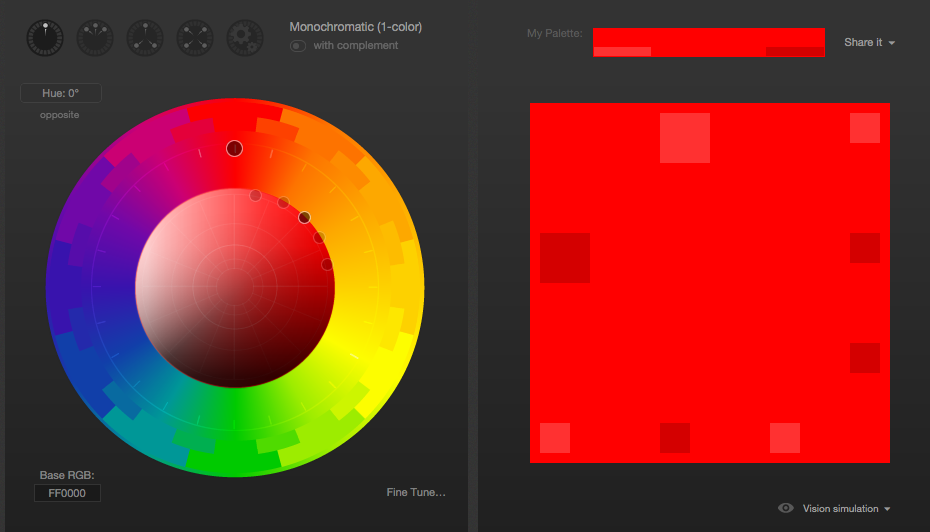
Web Style have created a useful colour tool that helps in the selection of colour combinations. The tool creates suitable colour combinations within various palettes that are comfortable and pleasant on the eye.
It generates color schemes of several types, consiting of 1 base colour, supplemented by additional colours using an algorithm that outputs colour within the full visible spectrum and within colour blind vision such as Deuteranopia (red/green color deficiency), Protanopia (another form of red/green color deficiency) and Tritanopia (a blue/yellow deficiency).
Experienced designers choose colors intuitively, many people can smell which colors go together well and which don’t. However, finding the good combination of colors may be sometimes long and gruelling work … This tool will find set of colors you can start with, and it may facilitate your looking for the optimal color palette.
